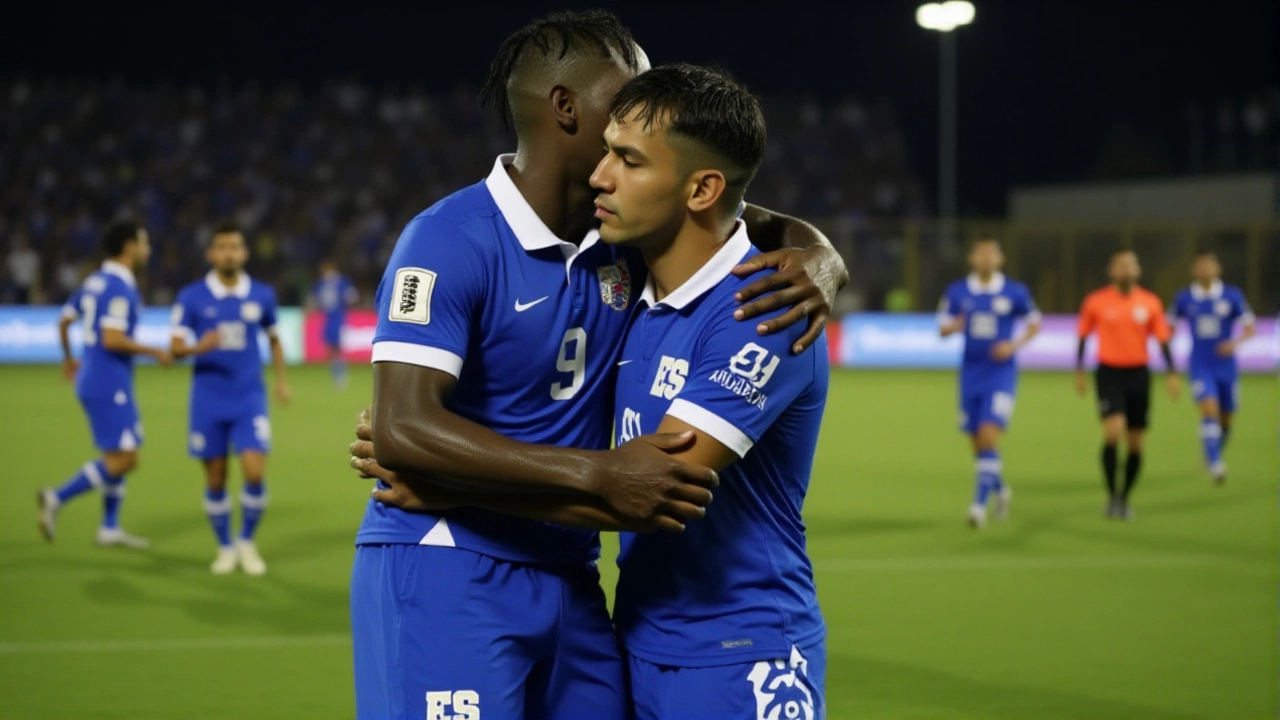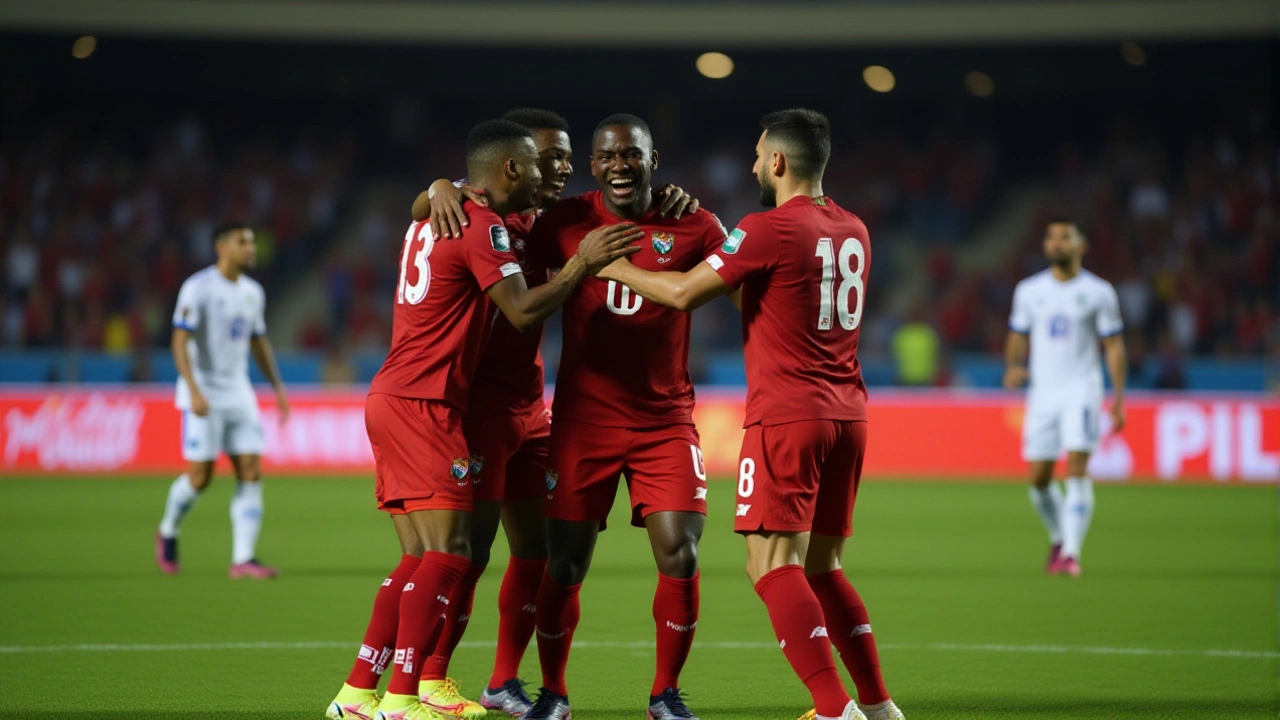When Jose Luis Rodriguez came off the bench in the 71st minute, few expected him to be the man who would seal Panama’s destiny. But within 11 minutes, he’d scored twice — the second a thunderous finish that sent Estadio Rommel Fernandez into a frenzy. It was over. Panama, for the second time in their history, was going to the 2026 FIFA World CupUnited States, Canada, and Mexico. The final whistle blew at 90'+1' on Tuesday, November 18, 2025, after a dominant 3-0 win over El Salvador in front of a roaring home crowd in Panama City. The victory wasn’t just a win — it was a coronation.
A Perfect Run, Finally Complete
Panama didn’t just qualify. They dominated. Finishing CONCACAF’s Third Round Group A with a flawless 3-3-0 record and 12 points, they were the only team in the entire qualifying cycle to go undefeated. No losses. No drama. Just steady, relentless football. Their +5 goal difference spoke volumes. Meanwhile, El Salvador ended with just three points — a season defined by heartbreak, not hope. Their -9 goal difference told the whole story: they were outclassed, outplayed, and outgunned.It wasn’t just about the final score. It was about the journey. Panama had drawn 0-0 in Suriname in September, then held Guatemala to a 1-1 stalemate at home. They scraped past El Salvador 1-0 on the road in October. But this? This was the statement. On a 78°F night with a light 6 mph northwest breeze, Panama turned the Estadio Rommel Fernandez into a cauldron of national pride.
The Goals That Made History
The scoring began early. Panama’s first goal came in the 17th minute — a slick combination down the left flank that ended with a low, curling finish from the edge of the box. But the real drama unfolded in the final 20 minutes. At 59', Panama broke through again after a brilliant through ball split the defense. The shot was saved, but the rebound fell perfectly to Tomás Rodríguez, who buried it. 2-0.Then came the moment everyone will remember. At 71', Jose Luis Rodriguez, the 29-year-old substitute from Colombia’s Atlético Junior, entered the field. By 75', he’d latched onto a loose ball in the box after a scramble, and with a calm, composed finish, he made it 3-0. The stadium erupted. Fireworks lit up the Panama City skyline. CBS Sports’ commentary captured it perfectly: “Jose Luis Rodriguez, the substitute, has booked Panama’s spot at the 2026 World Cup.”
That goal wasn’t just a goal. It was legacy. Rodriguez, who had only started three matches all season, became an instant national hero. His two goals in 15 minutes didn’t just seal qualification — they turned a quiet career into a legend.

Who’s Left in the Race?
With Panama at the top, Suriname finished second with nine points, a historic achievement for a nation that had never before reached this stage of World Cup qualifying. Guatemala clung to third with eight points, but their campaign fell apart after a 4-0 loss to El Salvador in October — a result that still haunts their federation. El Salvador? Their campaign was a cautionary tale. They lost their final four matches, conceding 14 goals. Their lone win came against Guatemala, 1-0, back in September. But that was it.On paper, Panama’s 12-point haul was the most points ever earned by a Central American team in this round of CONCACAF qualifying. Even in 2018, when they last qualified, they scraped through with 10 points. This time, they didn’t scrape. They soared.
Why This Matters Beyond the Pitch
For a country of just 4.5 million people, World Cup qualification is more than sport — it’s unity. Schools closed early. Streets emptied. Families gathered around TVs in bars, homes, and plazas. The last time Panama qualified, in 2018, the entire nation held its breath for 90 minutes during their final group match. This time? They knew. They felt it. And when Rodriguez scored, the whole country exhaled — then celebrated.And it’s not just emotional. Economically, the World Cup brings billions in tourism, broadcast rights, and sponsorship. Panama’s national team has become its most valuable export. The government has already signaled plans for a $2.3 million fan support fund for the 2026 trip. Airlines are adding direct flights from Panama City to host cities like Dallas, Toronto, and Mexico City.

What’s Next for Panama?
Now, the real challenge begins. The 2026 World Cup expands to 48 teams, meaning Panama will face stronger opponents than ever. They’ll be drawn against teams from Europe, South America, and Asia — not just CONCACAF rivals. Their coach, Ricardo Jara, will need to rebuild the squad around younger players like 19-year-old midfielder Edgardo Fariña and 21-year-old defender Iván Anderson. The core of this team — goalkeeper Luis Mejía, captain César Samudio, and midfield maestro Omar Browne — won’t be around forever.But for now, they savor it. The players danced on the pitch after the final whistle. The fans sang the national anthem, not as a ritual, but as a roar of triumph. This wasn’t luck. It was execution. It was grit. And it was beautiful.
Frequently Asked Questions
How many times has Panama qualified for the World Cup before?
Panama has qualified for the World Cup twice in their history: first in 2018 in Russia, and now in 2026. Their 2018 campaign was historic — they won their opening match against Tunisia, becoming the first Central American team to win a World Cup game since 2002. This time, they did it with a perfect qualifying record, showing significant growth in tactical discipline and depth.
Who scored Panama’s goals in the decisive match?
Two goals came from substitutes: Tomás Rodríguez netted the second in the 59th minute, and Jose Luis Rodriguez scored twice — the third goal in the 75th minute and a second in the 85th minute after a rebound. The first goal, in the 17th minute, was scored by captain César Samudio. All three scorers were key figures in Panama’s qualifying campaign, with Rodriguez’s late heroics becoming iconic.
What does this mean for CONCACAF’s World Cup slots?
With the 2026 World Cup expanding to 48 teams, CONCACAF now has six guaranteed spots. Panama joins the United States, Canada, and Mexico as automatic qualifiers as co-hosts. The other three spots go to the top three non-host teams from qualifying — Suriname, Guatemala, and Jamaica (who finished fifth). Panama’s win ensured they claimed one of those three, eliminating any chance of a playoff.
Why was the match played in Panama City and not elsewhere?
The match was the final group game, and Panama had already secured top spot, so they hosted it at their home stadium, Estadio Rommel Fernandez, which has been their traditional fortress since 1969. The venue holds over 32,000 fans and has hosted every major Panamanian qualifying match since 2006. The atmosphere there during this game was described by FIFA as “the most electric in CONCACAF qualifying history.”
How did Panama’s performance compare to their 2018 campaign?
In 2018, Panama scraped through with 10 points and needed a dramatic 2-1 win over Honduras on the final day. This time, they didn’t need drama — they dominated. They won 3, drew 3, and lost 0. Their goal difference improved from +2 in 2018 to +5 in 2026. Their defense was tighter, their midfield more controlled, and their attacking options deeper. The 2026 team wasn’t just better — it was more complete.
What’s the biggest challenge Panama faces in the 2026 World Cup?
The biggest challenge? Depth. While their core is experienced, only four players on the current roster have World Cup experience. They’ll likely face giants like Brazil, Spain, or Germany in the group stage. Their midfield, led by Omar Browne, must control tempo against physically dominant teams. And without a top-tier striker, they’ll need to rely on set pieces and counterattacks — areas they’ve sharpened under coach Jara.

